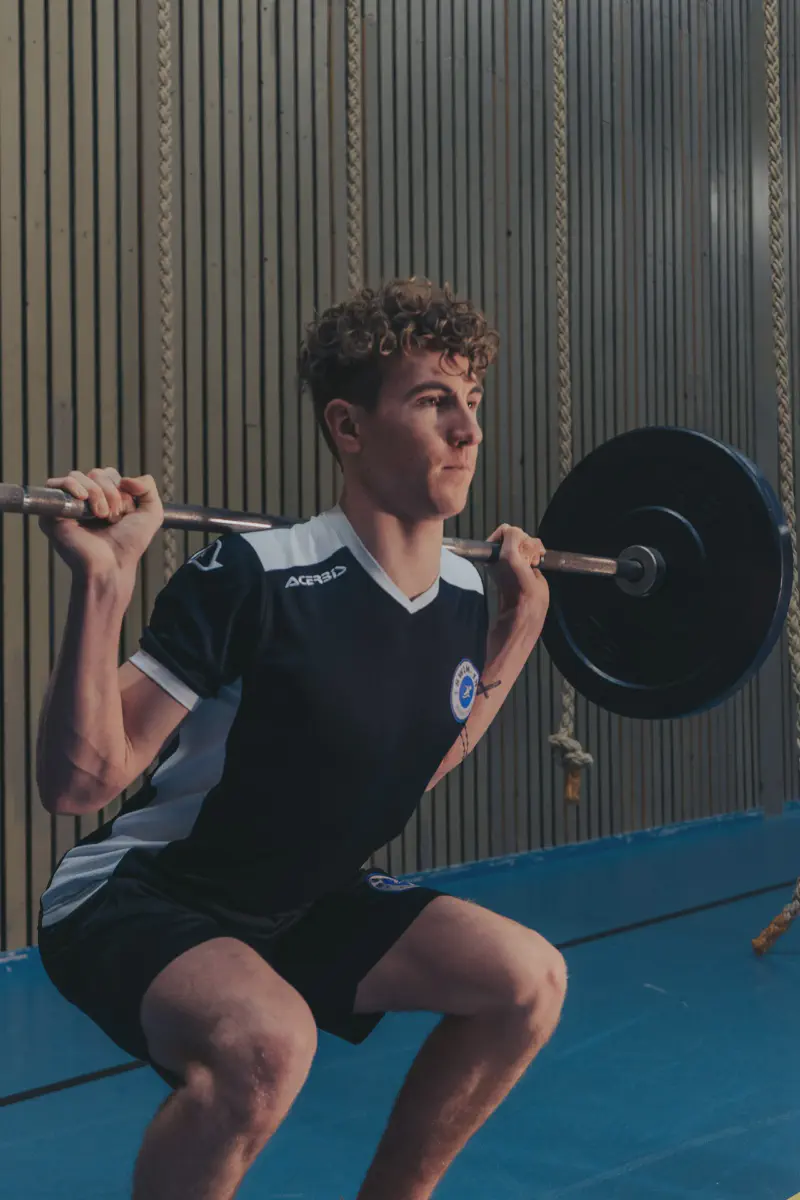Lower Body Strength Training for Runners: A Comprehensive Guide
Introduction:
Strength training is an essential component of a runner’s fitness regimen. It not only enhances performance but also reduces the risk of injuries. By incorporating leg workouts into their routine, runners can build stronger muscles, improve balance and coordination, and enhance overall running efficiency.
Leg Workouts for Runners:
Leg workouts for runners should focus on exercises that target the major muscle groups involved in running, such as the quadriceps, hamstrings, glutes, and calves. These exercises can be performed using bodyweight, free weights, or machines.
Key leg exercises for runners include:
- Squats: Squats are a compound exercise that works multiple muscle groups simultaneously. They strengthen the quadriceps, hamstrings, glutes, and core.
- Lunges: Lunges are a unilateral exercise that targets the quadriceps, hamstrings, glutes, and core. They also improve balance and coordination.
- Calf raises: Calf raises strengthen the calf muscles, which play a vital role in propulsion during running.
- Hamstring curls: Hamstring curls target the hamstrings, which are responsible for knee flexion and hip extension.
Functional Strength for Running:
In addition to strengthening the lower body, runners should also focus on developing core stability and upper body strength. Core stability is essential for maintaining proper posture and reducing the risk of lower back pain. Upper body strength contributes to running efficiency by providing balance and stability.
Injury Prevention:
Strength training helps prevent injuries by reducing muscle imbalances and strengthening the muscles that support the joints. When muscles are weak or imbalanced, they are more likely to be injured during running.
Cross-Training for Runners:
Incorporating other activities into a running routine, such as swimming, cycling, or yoga, can help improve overall fitness and reduce the risk of overuse injuries. Cross-training activities can also provide a mental break from running and help maintain motivation.
Specific Exercises for Runners:
Squats:
- Barbell back squat: Hold a barbell across your upper back and squat down until your thighs are parallel to the ground.
- Goblet squat: Hold a kettlebell or dumbbell in front of your chest and squat down until your thighs are parallel to the ground.
Lunges:
- Forward lunge: Step forward with one leg and bend both knees. Keep your front knee aligned with your ankle and your back knee close to the ground.
- Reverse lunge: Step backward with one leg and bend both knees. Keep your front knee aligned with your ankle and your back knee close to the ground.
- Lateral lunge: Step sideways with one leg and bend both knees. Keep your front knee aligned with your ankle and your back knee close to the ground.
Calf raises:
- Standing calf raise: Stand with your feet flat on the ground and raise up onto your toes.
- Seated calf raise: Sit down on a chair or bench with your feet flat on the ground and raise up onto your toes.
Hamstring curls:
- Lying hamstring curl: Lie down on your back with your knees bent and your feet flat on the ground. Hold a dumbbell or kettlebell in each hand and curl your heels towards your glutes.
- Seated hamstring curl: Sit down on a machine and place your feet under the pads. Curl your heels towards your glutes.
Core exercises:
- Plank: Hold a plank position with your forearms on the ground and your body in a straight line from head to heels.
- Side plank: Hold a side plank position with your body in a straight line from head to heels.
- Russian twist: Sit on the ground with your knees bent and your feet off the ground. Hold a weight or medicine ball in front of your chest and twist your torso from side to side.
Resistance Training:
Runners can choose from various types of resistance training, including weightlifting, band exercises, and bodyweight exercises. Weightlifting involves using barbells, dumbbells, or machines to add resistance to exercises. Band exercises use resistance bands to create resistance. Bodyweight exercises use the runner’s own body weight as resistance.
Bodyweight Exercises for Runners:
Bodyweight exercises are an excellent option for runners who want to improve their strength without using weights. Examples of bodyweight exercises include push-ups, squats, lunges, and pull-ups.
Ab Exercises for Men:
Strong abdominal muscles are essential for runners. They help stabilize the core, reduce the risk of lower back pain, and improve running efficiency. Effective ab exercises for men include crunches, leg raises, and sit-ups.
Best Ab Exercises:
The best ab exercises for runners are those that target the entire abdominal region, including the rectus abdominis, obliques, and transverse abdominis. Some of the most effective ab exercises include:
- Crunches: Lie on your back with your knees bent and your feet flat on the ground. Place your hands behind your head and crunch your upper body up towards your knees.
- Leg raises: Lie on your back with your hands at your sides. Raise your legs straight up towards the ceiling.
- Sit-ups: Sit on the ground with your knees bent and your feet flat on the ground. Place your hands behind your head and sit up until your chest is upright.
Conclusion:
Strength training is an indispensable part of a runner’s fitness program. By incorporating leg workouts, runners can build stronger muscles, improve balance and coordination, enhance running efficiency, prevent injuries, and improve overall fitness. Runners should focus on exercises that target the major muscle groups involved in running, as well as exercises that develop core stability and upper body strength. Cross-training activities can also be beneficial for runners. By following the guidelines outlined in this article, runners can optimize their strength training routine and achieve their fitness goals.
